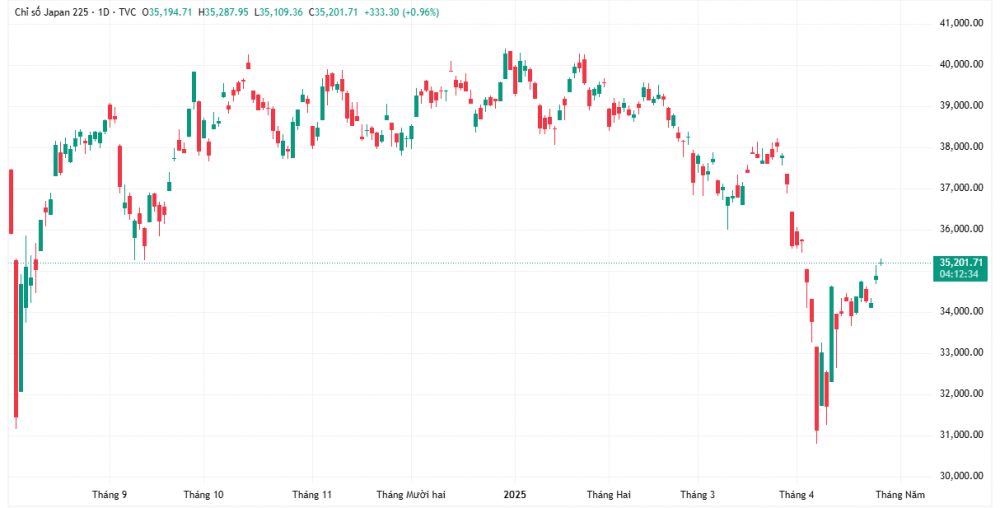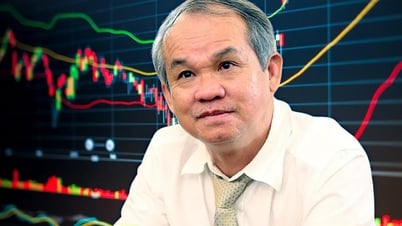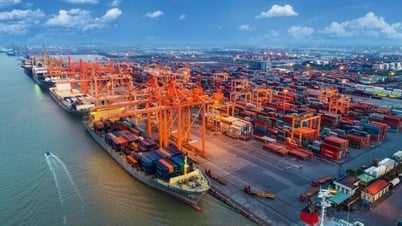 |
In a speech late Tuesday, in addition to withdrawing his threat to fire Fed Chairman Jerome Powell, US President Donald Trump also announced that tariffs on Chinese goods “will be reduced substantially.”
Investors' hopes for an easing of US-China trade tensions were further reinforced when US Treasury Secretary Scott Bessent continued to say that high tariffs between the US and China were unsustainable and Mr Trump signaled that he was willing to ease trade tensions between the world's two largest economies .
That helped global stocks have a positive trading session on Wednesday with all three major US stock indexes gaining points.
However, after the Wall Street Journal reported that the White House was considering cutting tariffs on imports from China, Treasury Secretary Scott Bessent said such a move would not be unilateral, echoing comments from White House spokeswoman Karoline Leavitt.
“I don’t think you can ever get used to the kind of volatility and constant change that we’ve seen. It’s extreme,” said Tony Sycamore, a market analyst at IG.
Asian stocks opened mixed on Thursday as renewed concerns about the outlook sent stocks higher, with the MSCI Asia Pacific Index outside Japan down 0.17%, despite a rebound in U.S. stocks on Wednesday on hopes of easing U.S.-China trade tensions.
In contrast, Japan's Nikkei 225 index rose 0.95%.
Meanwhile, US stock futures were steady with Nasdaq futures and S&P 500 futures up about 0.2% each. EUROSTOXX 50 futures also edged up 0.16%.
However, NHK reported on Thursday that the Trump administration told Japan's trade delegation that it could not give Japan special treatment regarding its tariff measures, in response to Tokyo's strong request for a review during ministerial-level talks this month.
“Short-term volatility is quite extreme right now… this high volatility will persist, you have increased volatility going forward, because the basic fundamental rules of the game are changing… the world economic order is changing,” said Salman Ahmed, global head of macro and strategic asset allocation at Fidelity International.
“I think what is clear is that we have passed the peak of globalization, all that kind of free flow of trade and capital is not going to be a steady state,” Ahmed said on the sidelines of the IMAS Investment Conference and Masterclass 2025 in Singapore.
Investor uncertainty also pushed the US dollar back down in Asian trading on Thursday morning after two days of strong recovery after Mr. Trump withdrew his threat to fire the Fed Chairman and positive news on tariffs on China.
Longer-dated U.S. Treasuries were also firmer as Trump reversed his threat to Powell, with the 30-year yield barely changing at 4.3675%. The 10-year yield, in particular, fell about 2 basis points to 4.3675%.
Regarding the Fed, Cleveland Fed President Beth Hammack said on Wednesday that the great uncertainty about the outlook continues to cause the central bank to slow down monetary policy to see how the economy performs. His comments echoed the views of many other Fed policymakers.
The market is currently pricing in a Fed rate cut of a little more than 80 basis points this year.
In the commodity market, oil prices stabilized after falling in the previous session when sources said OPEC+ would consider accelerating oil production in June. Specifically, Brent crude futures rose 0.2% to $ 66.26 / barrel, while US crude also increased 0.18% to $ 62.38 / barrel.
Gold continued to increase 1.2% to 3,329.03 USD/oz.
Source: https://thoibaonganhang.vn/chung-khoan-chau-a-bien-dong-trai-chieu-truoc-su-bat-dinh-ve-thue-quan-163273.html



![[Photo] Many young people patiently lined up under the hot sun to receive a special supplement from Nhan Dan Newspaper.](https://vphoto.vietnam.vn/thumb/1200x675/vietnam/resource/IMAGE/2025/5/18/6f19d322f9364f0ebb6fbfe9377842d3)
![[Photo] Ready for the top competitions of Vietnamese table tennis](https://vphoto.vietnam.vn/thumb/1200x675/vietnam/resource/IMAGE/2025/5/18/9c547c497c5a4ade8f98c8e7d44f5a41)























![[Photo] General Secretary To Lam visits exhibition of achievements in private economic development](https://vphoto.vietnam.vn/thumb/1200x675/vietnam/resource/IMAGE/2025/5/18/1809dc545f214a86911fe2d2d0fde2e8)

































































Comment (0)